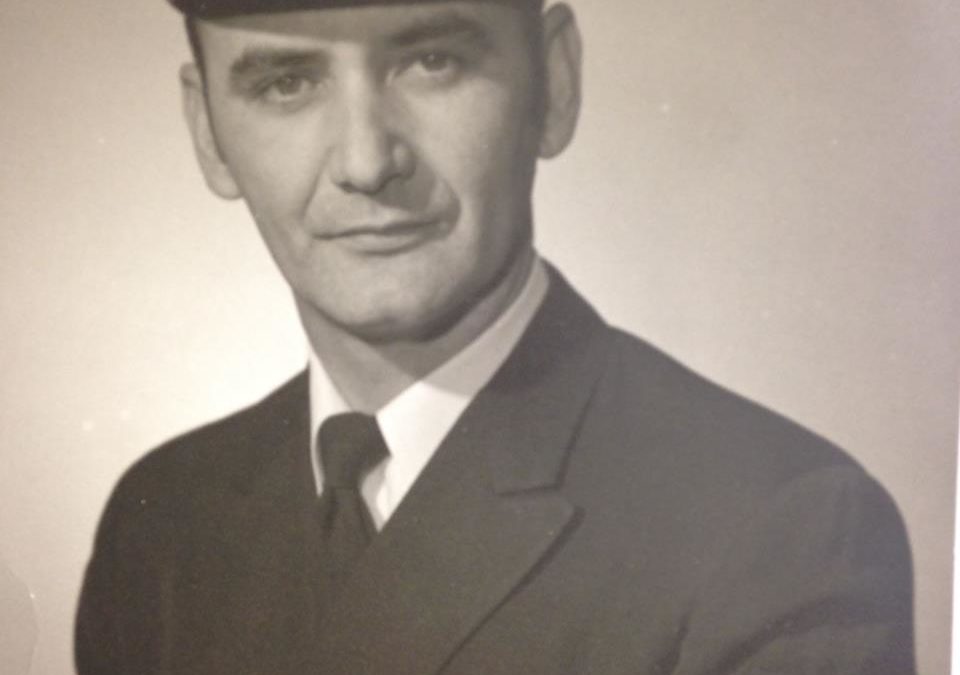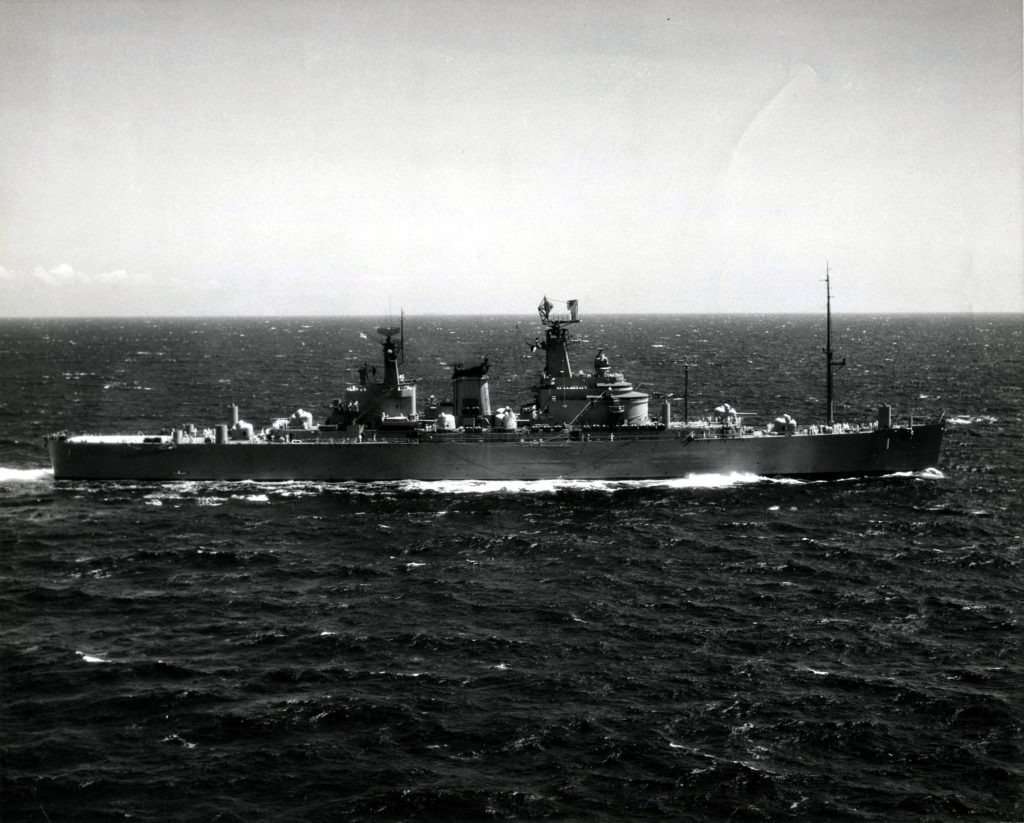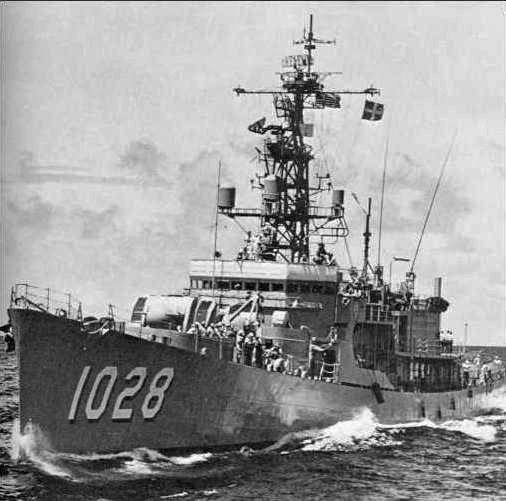In our first ever interview for our stories from the navy series, we sit down with Fred Dufault. Retiring a Master Chief in 1975 with a navy career spanning 21 years behind him, Fred has seen a great many things. He has been kind enough to chat with me and share some of his experiences.
In what year did you enlist in the Navy and what motivated you to join the Navy?
I enlisted in 1954 hoping to join the Navy Construction Battalion in the BU rating. Unfortunately, that was not meant to be as, unknown to me, the CB’s were scaling back in great numbers following the Korean conflict.
So where did the Navy eventually place you? Did you have any say in the matter?
Had a disappointing interview trying to convince the classifier I was worthy of consideration for a shot in the CB world. Rather than being up front with me he simply said “you know, you are not really big enough for the CB assignment you are asking for”. It seemed my general classification testing suggested I would be best suited to become a Machinist Mate or a Boiler Tender. As I had a vocational school education in the carpentry curriculum, I was really uninterested and opted for the only remaining choice, general sea duty.
Soon after arriving to my first sea assignment on board USS Northampton ECLC-1 in early 1955, I managed to avoid assignment to the hole and instead to the R Division. In the R Division I filled an apparent need for non rates in the Damage Controlman rating. Ironically, while on the Naval Base, Norfolk on a curiosity tour of the exchange, movie theater and gedunk , I happened to walk face to face into a sailor in his whites wearing the CB rating, BU3, that I so earnestly coveted just weeks earlier in boot camp. The irony of the fact he as at least 3 inches shorter than me was overwhelming. When I asked how long he had been a CB he answered about three years, but that the Navy was not reenlisting many as the quotas in many fields had been severely reduced. When I mentioned how much I had wanted to become a “B” and eas told the reason I could not, he could hardly contain his laughter, but agreed the “lying bast*rd” could have been truthful about it. So goes the start of making the most of an alternative outcome in my Navy career.
Talk about a punch in the gut. You mentioned being assigned to Northampton. Most readers would know she was a command ship, but explain to me exactly what she did. How was she generally deployed and what went on about her?
Northampton served as a presidential command ship and contained all the accommodations necessary to provide the Commander In Chief and principals in his staff a mobile command platform. USS Wright CC-2 also functioned somewhat in this capacity as a communications command platform. Northampton was the Sixth Fleet flag ship and when embarked deployed for extended periods with various task groups to operating theaters in the Atlantic, Mediterranean, Caribbean with many exciting port visits. On a port visit to Istanbul I enjoyed drinking a few beers with Russian sailors who seemed particularly interested in our American brands of cigarettes. I managed, with the capable assistance of the bar waitress, to arrange the acquisition of a Russian sailor hat for two unopened packages of camel cigarettes. The waitress was very helpful in translating our conversation and made the occasion quite enjoyable. My arrival back on board from Liberty raised some concerns and I had to surrender the souvenir to the CMAA. He allowed me to recover the hat upon our return to Norfolk. I enjoyed my 3 1/2 years on board Northampton as much for the extensive travel to parts of Northern Europe, the Med and Caribbean as I did for the prestige of serving on such a fine ship.
How well did the crew get along onboard your ship? I have heard from destroyermen that conditions were cramped enough that everyone knew everybody. In contrast, sailors from carriers recall that it was impossible to know everybody. What was it like aboard a cruiser?
Certainly relationships among crewmembers on Northampton were not what you would expect on destroyers and for the most part seemed impersonal due both to crew size and greater adherence to prevailing discipline. Reveille was promptly observed unless a “late sleeper” tag was displayed on your rack indicating mid watch stander, sweepers and daily routine was supervised by division PPO’s and LPO’s, and early chow passes were judiciously given and collected.
I recall an official visit to Northampton by President Eisenhour while in NYC for a embarked transit to Bermuda in the mid 50’s. As you might imagine, the ship was immaculately presented for his visit with the crew in whites (except for those in engineering spaces for the week long period at sea. The president’s visit, along with congressmen, aides, and the press included an at sea rendezvous with Canberra, Boston, and a number of destroyers to demonstrate the Boston’s missile shoot down of two drones flown out from Pax River, Md for the event. The whole matter was a news event that seemingly impressed Ike and was an occasion that made our CO and COMSIXFLT very proud. Upon arriving in Bermuda The President and Flag members disembarked to the waiting presidential yacht, Sequoia. Congressmen and others were debarked on the Admiral’s Barge, the Gig, and one of the 40′ motor launches. All was quiet at last and the ship returned a few days later to Norfolk. The president was a golfer and stayed in Bermuda for a short time to enjoy his leisure activity.
Fascinating. When you say the ship was immaculately presented, I take it they had the crew scrub and polish every inch of the ship. I believe Northampton still had a wooden deck. I imagine the crew was well acquainted with the holystone?
Northampton, although laid down in the early 40’s never saw its full fit out until the years following WW2. It’s design and purpose in the fleet seemed a little vague and indeed its high freeboard made it appear unusual for a cruiser of any class. Commissioned in the early 50’s as an “E” it truly seemed different in its SPS2 diamond shaped radar and the array of communication antennae. Although other cruisers preceding the 1950 were often decked in teak, Northampton was teak decked aft of mount 54, principally only the stern elevator deck which housed a helicopter and/or barge. Holy stoning was indeed a ritual routinely performed by 1st Division and anyone else who might be needed. I volunteered to holy stone to the cadence of the boatswains mates call on one or two occasions and must admit it’s a technique and rhythm movement that is strenuous, but easier as you get used to it.
Now was Northampton your only ship? Were you sent to any other vessels?
Yes indeed. My navy career spanned 21 years, 17 of which I served on a variety of ships including two destroyers, two Repair ships, a floating Drydock and a carrier.
Incredible! You have just about seen it all! Of those ships, which was the most difficult to get accustomed to?
The contrast both in size and complement of Northamption and Van Voorhis DE-1028, was challenging and at times difficult. Van Voorhis was challenging for a relatively young DC2 learning the working functions of a smaller ship, having to learn skills across other ratings in engineering, learning greater acceptance of others both bad and sometimes worse than bad under trying conditions. Learning to test my own limitations, learning loyalties to shipmates and of course adjusting to sudden changes in operating and deployment schedules. Difficult at times? Sure. Van Voorhis was like a cork in a seaway. With the largely aluminum superstructure she was stiff and quick to snap back from a roll. Needed to secure everything for sea lest it become the dreaded missile hazard we learned to be wary of. We learned to navigate the decks like monkeys moving to places we had to be day and night. Weather decks were occasionally treacherous and to be avoided unless tethered under extreme circumstances such as de-icing topside in Arctic operating areas. I vividly recall the result of extreme over the bridge wash in the North Atlantic an the early 60 winter when the forward aluminum gun tub collapsed against the gun. Days later, we further determined a partial cave in of the port super aft and a separation of the super bulkhead along the riveted steel deck coaming. The sea was claimed three of the 1 1/2 inch fire hose racks leaving the hose hanging in a tangle from the lifelines. Sea sickness? Sure. Most seem to adjust or deny they were much affected. Others really struggled. Had to helicopter evacuate one crewmember who lay strapped to a mess deck table with IV in both arms to support hydration he could not manage by drinking. The Van Voorhis was a memorable sea experience I occasionally reflect upon. It was a bit rougher sea riding than a 2100 ton can.
Speaking of memories, what was the most memorable experience you had in your naval career?
The most memorable experiences I can truly say was also a learning experience was my three year tour of duty at the Ship a Repair Facility, Agana Guam. I was married then, with my wife and young daughter on an accompanied tour to a distant location neither of expected would ever occur in my navy career. With my tour of duty in Vietnam on an AR behind me, and a restful tour ashore at NAVPHIBSCOL Little Creek who would not appreciate such a plum assignment overseas? Actually the adjustment to the climate, the native population and came pretty easy for us. We enjoyed the weekend fiestas with many Guamanian friends in the nearby village of Agat and surely enjoyed the leisure benefits of island living including a hop over to the neighboring island of Saipan. My duty assignment as a DCCS involved the operation and dock basin setup for dry docking SSBN and fast attack boats in a 96′ x 600′ AFDM class floating Drydock. Had a thirty day turnover learning curve from my predecessor and a very capable warrant Carpenter who spent many hours with me in the docking office and in the dock basin overseeing the placement of each of the curved side blocks and concrete base keel blocks with wooden caps. This involved crane work from the dock wing walls, transit readings for block placement and final acceptance of the dock prior to deep submergence and receiving the boat for its docking period of perhaps two weeks or more. During the course of three years, we had docked an average of 18 per year for routine sweep blasting, hull preservation and various minor repairs. The ballast control operation was introduced to each of the CPO’s regardless of their specialty and primary dock function. The other docks I operated on (to a lesser extent) at the SRF included the AFDM -5 and the AFDL-21. My primary assignment was AFDM -8, AKA USS Richland. Submarine docking was the major mission of the Docking Department although on occasion we docked other vessels within the dock’s lifting capacity. Docking plans and the prescribed docking reports of the ship’s previous docking were carefully reviewed and followed to provide an accurate block cutting list. Positioning the ship precisely before pumping up the dock was imperative to avoid underwater hull openings and exterior hull fittings. Left Guam for my last sea assignment to the USS Ranger CVA-61 at NAS Alameda. Ironically, my former boss, now LT Harrington (LDO. Hull) joined me on Ranger for what may have been as surprising to him as it certainly was to me. It was a happy landing.
I am happy to see that you have no regrets. Fred, thank you for your service and thank you so much for sharing a bit of your life with the NBG readers. I really appreciate you agreeing to be our first interviewee.
Before I get everything published, any final words, thoughts, or opinions you would like to share with the readers?
It has been a great pleasure to share with my fellow shipmates and readers my experiences at sea serving in our Navy. I am grateful to the NGB for providing its readers this unique opportunity to bring us back a few years to our years of service. I look forward to future articles concerning naval history so well researched by NGB and to continued participation by the most important resource, our fellow shipmates.
Final Words and Links
A big thanks to Fred for taking the time to answer some questions. This was the first of what I hope become a series of interviews.
If you are interested in sharing your experiences in the navy, feel free to contact me at blumarlinmedia@gmail.com
You can also reach out to me via the Navy General Board Facebook Page.
The post Stories from the Navy with Fred Dufault appeared first on Navy General Board.





Recent Comments